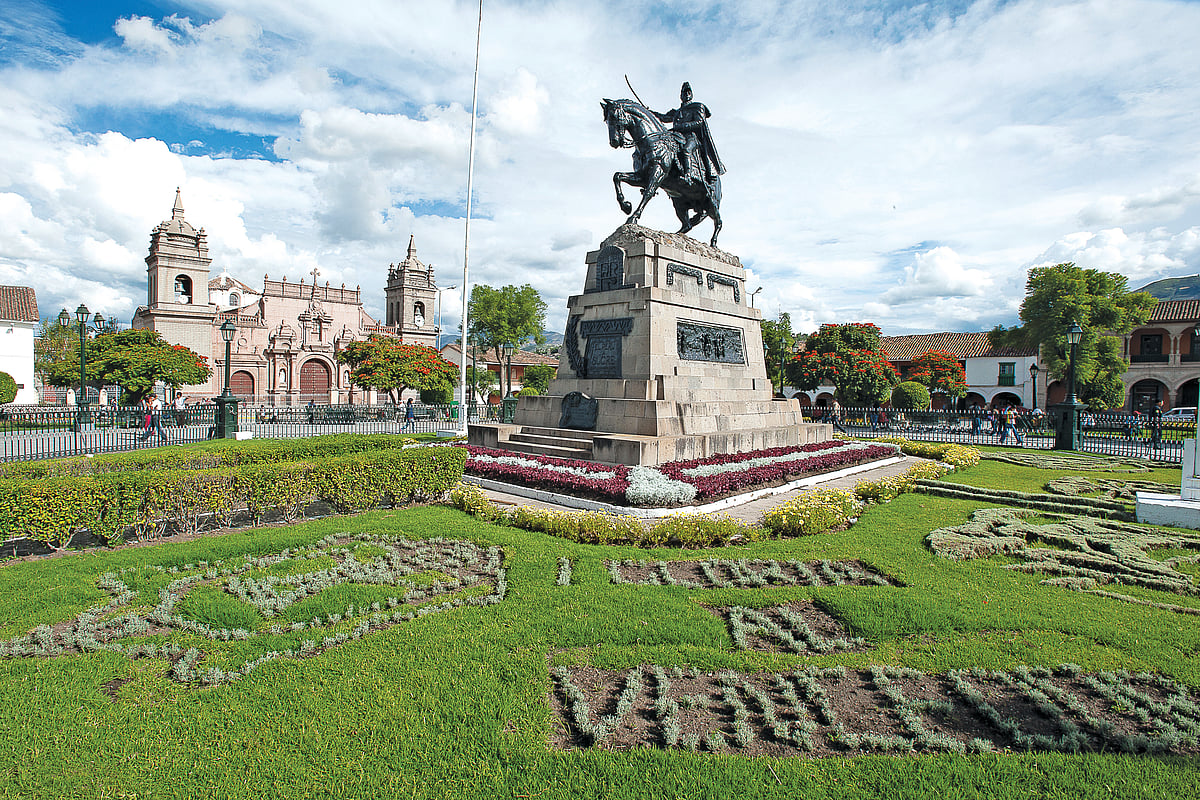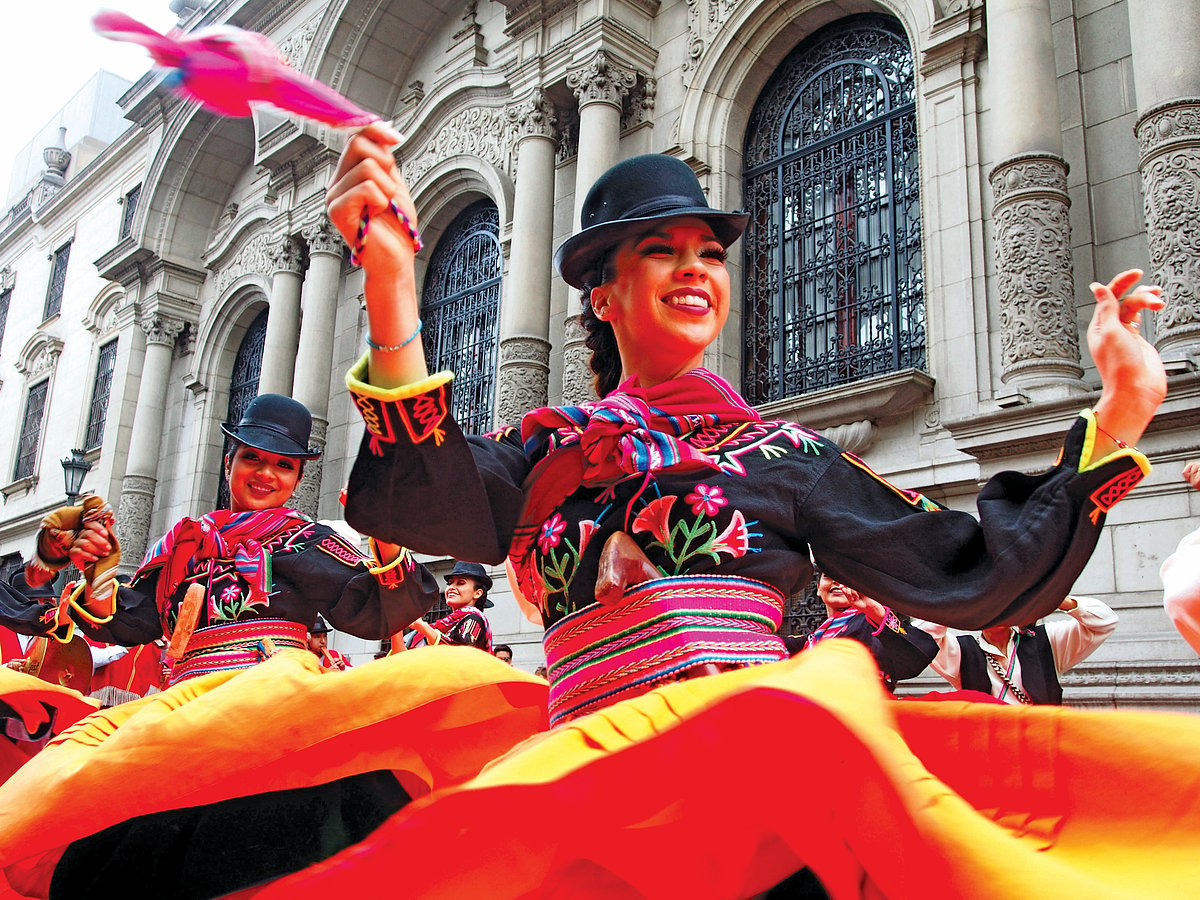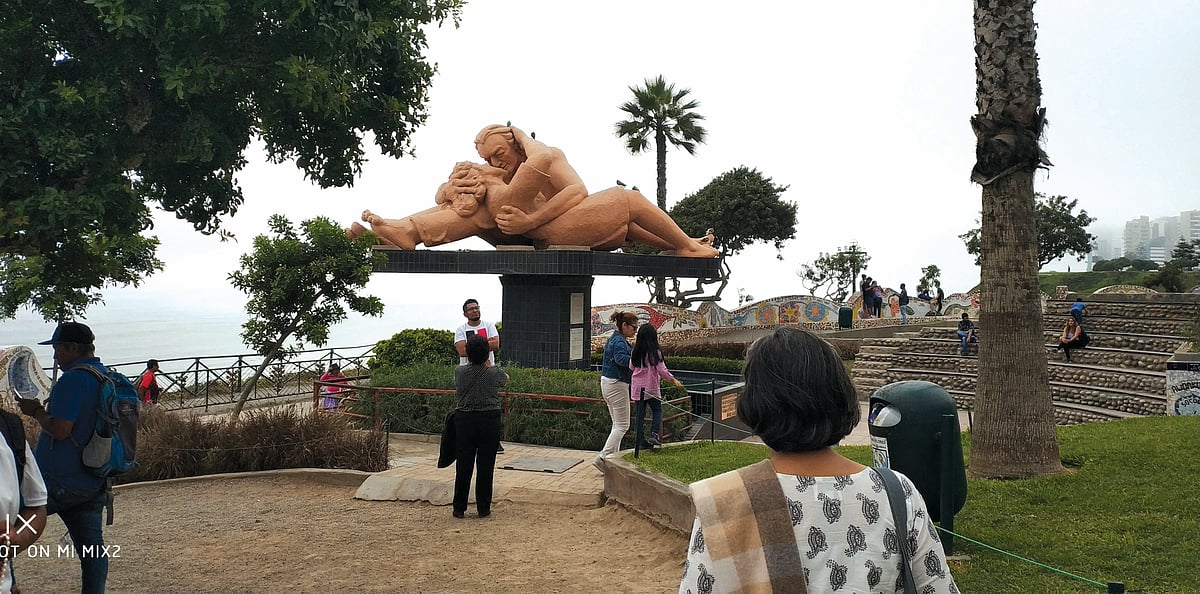Peru is much more than Machu Pichhu
Peru is a global tourist destination primarily because of Machu Pichhu. But Peru is much more than just Machu Pichhu

Peru is a global tourist destination primarily because of Machu Pichhu. But Peru is much more than just Machu Pichhu. For the reason of distance, language and the cost involved, it is not yet a favoured destination for Indian tourists. Distance, of course, remains what it is. It is ten-and-a-half hours behind Indian time, almost half the globe away.
On the other two counts, it is not as formidable as it appears at the first instance. The travel costs are modest; hotels are moderately priced without compromising on the standards that are comparable to Europe. Peruvians speak Spanish. But in tourist places, a combination of English and sign language works so well that one didn’t feel like a stranger there.
We emerged from Jorge Chavez international airport at Lima in the dim light of the dusk. As we drove out, we saw a vintage plane at the air terminal. It is a replica of the famous Bleriot XI monoplane on which Jorge Chavez, 24-years-old then and an icon of Peruvian aviation, did the historic first crossing of the Alps in 1910. But his plane crashed on the Italian side, unable to cope with the tricky gusts of wind. He sustained fatal injuries and died four days later.
My pickup is a taxi booked through the internet. The driver speaks Spanish and bare minimum of English. As we drive out, the city appears familiar. It is crowded and bordering on the chaotic, quite like any Indian city. Frequent lane violations, blaring horns and, wrong side entries were far too familiar to our Indian eyes. The driver told me it was Callao district, not one of the decent neighbourhoods on counts more than one.
From the visitor’s point of view, only two districts seemed to be safe and of touristic interest in Lima: Miraflores and the historic city.
Miraflores is more like a European city. It is modern, cosmopolitan, orderly, policed heavily by tourist police and therefore crime free. Most of the good hotels are located here. It is located on a hill by the seaside with a sheer drop of a cliff to the marine drive down below.
Located on the cliff is Larcomer, which is a gigantic shopping mall, park, public space, museum and an art gallery all combined in one. It offers a spectacular view of the seaside. A short distance away is ‘Parque del Amor’ (Love Park).
Its claim to fame is El Beso (the kiss), a large sculpture depicting the sculptor, Victor Delfin, and his wife kissing with the vast expanse of the Pacific ocean in the background. It reflects non-erotic love in its purest and simplest art form.
I admire this public celebration of love. Possibly inspired by The Pont des Arts Bridge over the river Seine in Paris, one fence of the park has become a love lock wall where couples lock their wish to remain eternally in love by throwing away the key into the sea. Though Lima holds an annual kissing competition, public display of affection is however conspicuously absent on the streets of Peru.
Tucked at the centre of this bustling modernity of Miraflores is the most ancient archaeological site in Lima. Huaca Pucclana is a large terraced pyramid made of clay in the 6th century during the hey days of Lima culture. It was initially a ceremonial and administrative centre meant to assert the authority of the elite about their religious power and ability to control all resources. Later, during Wari and Yschma Cultures, the place was also used as cemetery, a place for offerings and other rituals.
It has a huge and commanding presence covering an area bigger than six city blocks. Europe bound flights from Lima usually take off from runway 15 (south south west). As the plane ascends after take-off, it turns and banks left to set its course eastwards when the majestic Huaca Pucclana suddenly looms into view, providing a bird’s eye view if you are seated on the port side.
The historic city is to the north of Miraflores. City BRT service — Metropolitano — is a north south dedicated corridor across the length of Lima. It is clean, efficient and fast.
The historic city itself is huge. There are countless imposing buildings, plaza, parks, large open spaces and dozens of museums. The entire construction is post-Hispanic colonial and bears the grandeur meant to underline the might of the colonisers.
The pride of the place is Plaza De Aramas (also called Plaza Mayor — actually Plaza Major, but in Spanish, J is pronounced as a sound in between Y or H). It is large, impressive and in the Spanish tradition, it’s bordered on four sides by Presidential Palace or Palacio de Gobierno, the Cathedral and Archbishop’s Palace, the Municipalidad or City Hall, and assorted shops.
Our destination in Peru is Altiplano: the Andean plateau. The entire plateau is above an altitude of 11000 feet, necessitating acclimatisation.
We chose a short stay at Arequipa for the purpose. Arequipa is an ideal place for acclimatisation. It is about 8000 ft abovethe sea level. One of the oldest Spanish settlements in Peru, it is surrounded by three majestic volcanoes. A volcano is visible from every roof top in the city.
The buildings are all made of sillar, a volcanic white rock giving the city its nick name, ‘white city’ (la ciudad blanca, in Spanish). The Plaza Mayor, like any city in Peru, is impressively grand. It is a bustling place in the evenings. Arequipa is also the gateway to Colca Canyons, the deepest canyon in the world (deeper than Grand Canyon) and home to condors. The condor, symbolising righteousness, was considered the most sacred bird by Incas. The local streams have lots of trout. A meal of rice and trout washed down with the delectable Pisco Sour makes it memorable. Pisco sour is the national drink of Peru. It is a cocktail of pisco (a Peruvian brandy), egg white, lime juice, and angostura bitter.
Next day we travel to Puno (altitude: 12000 ft). It is the gateway to Lake Titicaca. Again, purely for the purpose of better acclimatisation, we travelled by bus. The journey to Puno takes nine hours in the ultra luxurious Cruz del Sur bus, punctuated by a short halt midway at a high mountain pass.
At this height both population and the vegetation are sparse. There are occasional potato plots. Peru is the original home to potato and it grows more than three thousand varieties of the tuber! At the halting place, there are Andean ladies selling the local woollens. I purchased a shawl after a hard bargain.
Most of the passengers in the bus were foreigners and the women did business with the iron wall of language barrier using most primitive medium of human communication. The bargaining was done by sellers writing the asking price on their palm and buyers writing the offer price on theirs. After two or three corrections on both palms, the deals were struck, with a smile and exchange of ‘Gracias’ from both parties.
Beyond this point, uphill it was interesting to find the winding road embracing a railway line unlike modern railroads. These were tourist trains plying from Lima but they take more time and money and is mostly patronised by elderly tourists.
We went to the same restaurant at Plaza Mayor in Puno for Dinner two days in a row. On the second day the owner himself greeted us with a friendly Buena noches (Good evening), “From Mexico”?
I smile back, “No, from India.” He further enquires if we are Indian Americans. I smile back, “No, we came from India all the way. It turns out we are the first Indian guests for him. Our drink was on the house!
From Puno, boats take tourists on a guided day trip to Lake Titicaca. Titicaca is more than eight thousand square kilometres of freshwater body saddling across Peru and Bolivia. Though it is not the highest or the largest lake in the world, it does carry the distinction of being the highest navigable lake in the world.
Our bilingual guide is a jovial highlander. In his narrative of the lake he shares a Peruvian saying about the lake with a mischievous smile, “it is Titi for Peru and Caca for Bolivia”. The lake is revered by the locals and has lots of stories in the realm of its mythology. A person falling in the lake becomes an offering to the earth and he is not supposed to be rescued!
The lake has many islands-some of them are inhabited. The most interesting of them are the Uros group of islands. They are man-made floating islands created out of Totora reeds. Along the shallow waters of the lake shore there are large swathes of this reed.
Uros islanders practically live off these reeds. Their island, their houses, their boats, their beddings and their fuel all come from Totora. The soft inner part of the reed is eaten as well. This reed floats on water. The islands, therefore, are floating and can be towed or rowed from one place to other.
Each island has a number of houses and the bigger one also has a watch tower. In case of a dispute or a consented partition, the island can be sawed in two parts. If a neighbour is not to the liking, the home can be taken to a different location like a free atom migrating to a different molecule.
The Uros people claim to be ‘sons of sun’ and took to the floating existence to escape persecution by invasion from another set of sun descendents-the Incas. It is a unique experience to visit the
island that gives the feel like walking over a waterbed. The families have lived there for generations and have an entire eco system for their existence.
Tourism, of late has been integrated into this economic milieu. They have preserved their culture and language (Quechua) through the onslaught of Incas, Spanish and now the tourists. We shared a ride with Uros in their reed boats for a short inter-island trip before taking the big boat to another island.
Andean women wear their traditional dress of capes, shawls, embroidered skirts, and multi coloured hats. They wear many skirts. The number of skirts is proportionate to the economic and social status or occasion. Rich and important ladies may wear up to 25 layers of skirt. Women also knit and weave. The quality of weave is a serious consideration in matrimonial proposals. Married women, when weaving for their husbands serendipitously incorporate their own hair in the weave. It is their belief that men will not wander away with part of theirs being always with him.
Taquile is a small natural Island, 30 kilometres off the shore in Puno. It is home to two thousand people. On the boat we were a diverse group of thirty representing all continents including Australia.
We had lunch of potato soup, rice and fried local fish. I demonstrated to them our Indian way of eating by mixing potato soup to rice and use of fish on the side. It received a welcome acceptance followed by immediate appreciation. A young man from Germany is quick to infer, “there is no need of a drink to wash it down.” The soft power of Indian eating!
In the group there is a primary school teacher from Brazil. He is a young man who is touring Peru with his girlfriend. We exchange information about our homelands and in general the life and times. Partly to make him feel nice and also to probe his political leaning I ask him his opinion of the Brazilian president Mr Bolsonaro.
“He is like Your Premier Mr Modi in many ways”, he was quick to counter. I was outwitted but also awed by the awareness of this primary school teacher. How many primary school teachers in India would be so aware of the world affairs and know about Bolsonaro, I wondered. But clearly India is being noticed in faraway places across the globe.
On three occasions during our travel in Peru we were greeted by complete strangers on the street to check if we were from India. And on every occasion the next exclamation was concerning Shah Rukh Khan. SRK enjoys a cult status in Peru like what Raj Kapoor enjoyed in Russia in the sixties.
The soft power of Indian cinema was working thousands of kilometres away in a country where no one speaks a word of Hindi. Another ubiquitous Indian presence in Peru are Bajaj auto three wheelers.
Taquile Island also has a plaza. At one corner of the Plaza on this tiny island in Lake Titicaca stands a fingerpost with direction and distance to major world cities. One of the fingers reads:
NUEVA DELHI-16341.
Follow us on: Facebook, Twitter, Google News, Instagram
Join our official telegram channel (@nationalherald) and stay updated with the latest headlines




